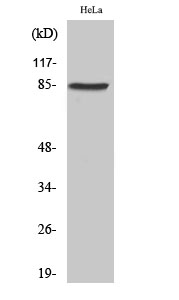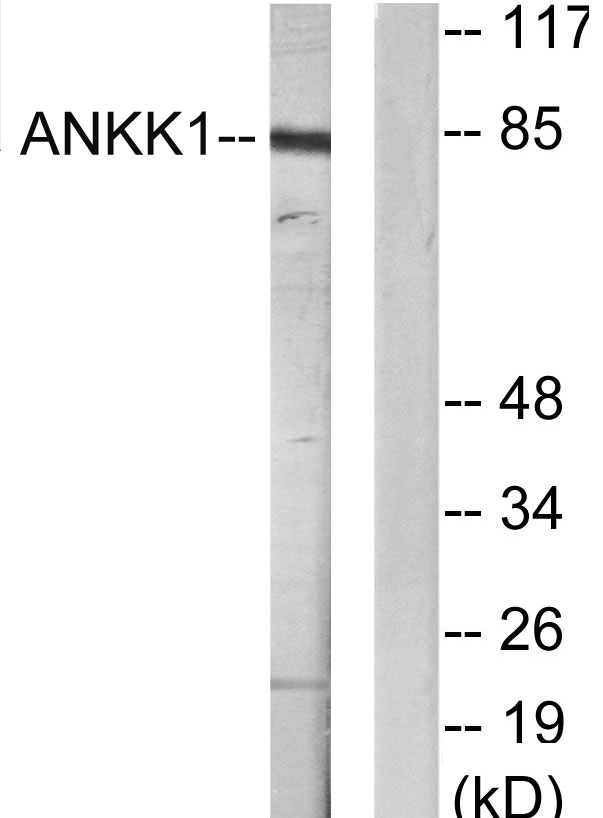SgK288 Polyclonal Antibody
- 货号:YT4272
- 应用:WB;ELISA
- 种属:Human;Mouse
- 蛋白名称:
- Ankyrin repeat and protein kinase domain-containing protein 1
- 免疫原:
- The antiserum was produced against synthesized peptide derived from human ANKK1. AA range:321-370
- 特异性:
- SgK288 Polyclonal Antibody detects endogenous levels of SgK288 protein.
- 组成:
- Liquid in PBS containing 50% glycerol, 0.5% BSA and 0.02% sodium azide.
- 来源:
- Polyclonal, Rabbit,IgG
- 稀释:
- WB 1:500 - 1:2000. ELISA: 1:20000. Not yet tested in other applications.
- 纯化工艺:
- The antibody was affinity-purified from rabbit antiserum by affinity-chromatography using epitope-specific immunogen.
- 储存:
- -15°C to -25°C/1 year(Do not lower than -25°C)
- 其他名称:
- ANKK1;PKK2;SGK288;Ankyrin repeat and protein kinase domain-containing protein 1;Protein kinase PKK2;Sugen kinase 288;SgK288;X-kinase
- 背景:
- The protein encoded by this gene belongs to the Ser/Thr protein kinase family, and protein kinase superfamily involved in signal transduction pathways. This gene is closely linked to DRD2 gene (GeneID:1813) on chr 11, and a well studied restriction fragment length polymorphism (RFLP) designated TaqIA, was originally associated with the DRD2 gene, however, later was determined to be located in exon 8 of ANKK1 gene (PMIDs: 18621654, 15146457), where it causes a nonconservative amino acid substitution. It is not clear if this gene plays any role in neuropsychiatric disorders previously associated with Taq1A RFLP. [provided by RefSeq, Sep 2009],
- 功能:
- catalytic activity:ATP + a protein = ADP + a phosphoprotein.,similarity:Belongs to the protein kinase superfamily. TKL Ser/Thr protein kinase family.,similarity:Contains 1 protein kinase domain.,similarity:Contains 12 ANK repeats.,tissue specificity:Highly expressed in brain and weakly expressed in placenta and spinal cord.,
- 组织表达:
- Highly expressed in brain and weakly expressed in placenta and spinal cord.

- Western Blot analysis of various cells using SgK288 Polyclonal Antibody

- Western blot analysis of lysates from HeLa cells, using ANKK1 Antibody. The lane on the right is blocked with the synthesized peptide.





